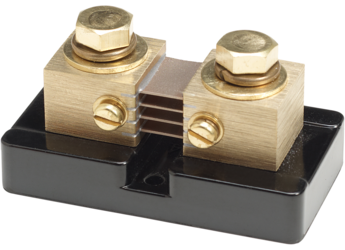Shunt- How Does It Work?
Image Source Here
When a stream of water flows, there is a current. Did you know that even the human body uses small currents in our nerves to carry information from the brain to many parts of the body? But that should be in a different article because right now we are going to talk about electrical current.
Current is the flow of electrical charge carriers like electrons. Just to tell you, current flows from negative to positive points.
You should be interested in how much amount of current is being drawn since it would be dangerous if you have an insufficient current or excessive current as well. For you to have a just right level of current, Canadian Shunts can surely help you do that.
Understanding Ohm’s Law will help us discern current. Ohm’s Law defines the relationship between current, voltage, and resistance. By knowing two of these three, it is possible to solve the unknown.
This exactly is the basic concept behind the current shunt. A current goes through a resistor and the voltage drop across the resistor is measured.
If the resistance is also given, you can get the amount of current by using this equation, current (I) equals voltage (V) divided by the resistance (R).
Let us consider a microcontroller used to control a DC motor with a transistor that is managed by a Pulse Width Modulation (PWM) output as our example.
A given resistance is placed inline with the motor while the dropout voltage across it is measured with the onboard analog-to-digital converter. A few lines of code would make it easier for the microcontroller to compute the flow of current in the motor.
Knowing this kind of information would be beneficial to prevent the motor from overheating and the drive transistors can be protected from having a failure.
Strategies like this can be applied in various ways. For your projects such as microcontrollers, you can measure as many currents as you like. For the protection of your power supply or LED works, using current shunt is the answer.
Now, how would you know what resistor to use as a current shunt? You must remember that the power loss is relative to resistance. You can use this formula, power loss in the resistor is equal to the current squared multiplied by the resistance.
This high resistance will restrict any current that will pass through the circuit, turning power waste to heat. Due to this, the current shunt resistance should be as low as possible. So, as much as you know the resistance of the wire link is, it can be utilized to calculate the current passing through it.
Therefore, a shunt is commonly used to protect the speed controller from a load drawing excessive current or simply limit the speed of the attached motor.
There are times that a highly accurate current shunt is required. In such a case, a precision current shunt may be used with a voltmeter to define the current passing through the circuit.
Equipped with an aptly sensitive voltmeter, safely measuring large currents becomes possible, something an average multimeter cannot accomplish.
These are just a few of the things in using current shunts. Always remember to apply the fundamental principle of the current shunt with the appropriate tools for your projects, to guarantee that any measurements taken are credible and safe.
